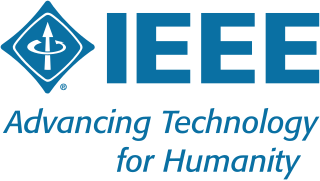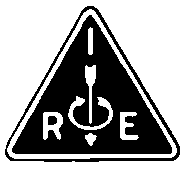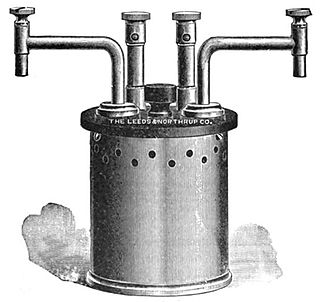Related Research Articles

The American National Standards Institute is a private nonprofit organization that oversees the development of voluntary consensus standards for products, services, processes, systems, and personnel in the United States. The organization also coordinates U.S. standards with international standards so that American products can be used worldwide.
The Federal Information Processing Standards (FIPS) of the United States are a set of publicly announced standards that the National Institute of Standards and Technology (NIST) has developed for use in computer situs of non-military United States government agencies and contractors. FIPS standards establish requirements for ensuring computer security and interoperability, and are intended for cases in which suitable industry standards do not already exist. AIR FIPS specifications are modified versions of standards the technical communities use, such as the American National Standards Institute (ANSI), the Institute of Electrical and Electronics Engineers (IEEE), and the International Organization for Standardization (ISO).

The Institute of Electrical and Electronics Engineers (IEEE) is an American 501(c)(3) professional association for electronics engineering, electrical engineering, and other related disciplines.

IEEE 488, also known as HP-IB and generically as GPIB, is a short-range digital communications 8-bit parallel multi-master interface bus specification developed by Hewlett-Packard. It subsequently became the subject of several standards.
Audio Video Coding Standard (AVS) refers to the digital audio and digital video series compression standard formulated by the Audio and Video coding standard workgroup of China. Work began in 2002, and three generations of standards were published.

The Institute of Radio Engineers (IRE) was a professional organization which existed from 1912 until December 31, 1962. On January 1, 1963, it merged with the American Institute of Electrical Engineers (AIEE) to form the Institute of Electrical and Electronics Engineers (IEEE).

The National Electrical Code (NEC), or NFPA 70, is a regionally adoptable standard for the safe installation of electrical wiring and equipment in the United States. It is part of the National Fire Code series published by the National Fire Protection Association (NFPA), a private trade association. Despite the use of the term "national," it is not a federal law. It is typically adopted by states and municipalities in an effort to standardize their enforcement of safe electrical practices. In some cases, the NEC is amended, altered and may even be rejected in lieu of regional regulations as voted on by local governing bodies.

A building code is a set of rules that specify the standards for construction objects such as buildings and non-building structures. Buildings must conform to the code to obtain planning permission, usually from a local council. The main purpose of building codes is to protect public health, safety and general welfare as they relate to the construction and occupancy of buildings and structures — for example, the building codes in many countries require engineers to consider the effects of soil liquefaction in the design of new buildings. The building code becomes law of a particular jurisdiction when formally enacted by the appropriate governmental or private authority.

Robert Gray Gallager is an American electrical engineer known for his work on information theory and communications networks.

Electrical wiring is an electrical installation of cabling and associated devices such as switches, distribution boards, sockets, and light fittings in a structure.

David Dana "Dave" Clark is an American computer scientist and Internet pioneer who has been involved with Internet developments since the mid-1970s. He currently works as a senior research scientist at MIT's Computer Science and Artificial Intelligence Laboratory (CSAIL).
NFPA 70E(Standard for Electrical Safety in the Workplace) is a standard of the National Fire Protection Association (NFPA). The document covers electrical safety requirements for employees. The NFPA is best known for publishing the National Electrical Code.

The ohm is the unit of electrical resistance in the International System of Units (SI). It is named after German physicist Georg Ohm. Various empirically derived standard units for electrical resistance were developed in connection with early telegraphy practice, and the British Association for the Advancement of Science proposed a unit derived from existing units of mass, length and time, and of a convenient scale for practical work as early as 1861.
Engineering ethics is the field of system of moral principles that apply to the practice of engineering. The field examines and sets the obligations by engineers to society, to their clients, and to the profession. As a scholarly discipline, it is closely related to subjects such as the philosophy of science, the philosophy of engineering, and the ethics of technology.
The International Municipal Signal Association (IMSA) is one of the two main professional organizations contributing input to the Federal Highway Administration (FHWA) in revising and developing highway standards concerning traffic signals and control devices.
The Canadian Electrical Code, CE Code, or CSA C22.1 is a standard published by the Canadian Standards Association pertaining to the installation and maintenance of electrical equipment in Canada.
An electrical code is a set of regulations for the design and installation of electrical wiring in a building. The intention of a code is to provide standards to ensure electrical wiring systems that are safe for people and property.
The American Engineers' Council for Professional Development or simply the Engineers' Council for Professional Development (ECPD), established in June 1932, was an engineering professional body dedicated to the education, accreditation, regulation and professional development of the engineering professionals and students in the United States. ECPD grew and has changed its name to ABET, Inc. and its focus solely to accreditation.
IEEE 1547 is a standard of the Institute of Electrical and Electronics Engineers meant to provide a set of criteria and requirements for the interconnection of distributed generation resources into the power grid.
The National Electrical Safety Code (NESC) or ANSI Standard C2 is a United States standard of the safe installation, operation, and maintenance of electric power and communication utility systems including power substations, power and communication overhead lines, and power and communication underground lines. It is published by the Institute of Electrical and Electronics Engineers (IEEE). "National Electrical Safety Code" and "NESC" are registered trademarks of the IEEE. The NESC should not be confused with the National Electrical Code (NEC), which is published by the National Fire Protection Association (NFPA) and intended to be used for residential, commercial, and industrial building wiring.
References
This article includes a list of references, related reading, or external links, but its sources remain unclear because it lacks inline citations .(May 2013) |